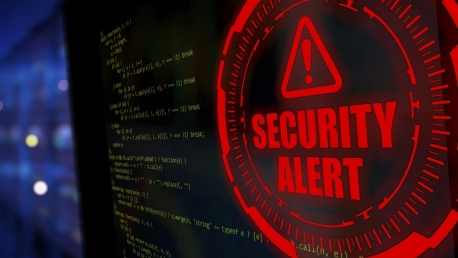Cyber incidents are inevitable in today’s increasingly digital world, necessitating robust incident management processes to ensure the continuity of essential functions. As cyber threats proliferate, organizations must proactively prepare to mitigate their impact. This preparation involves comprehensive risk assessments, proactive planning, and ensuring regulatory compliance. By understanding the steps necessary for effective cyber incident response, organizations can better safeguard their operations against the malicious activities that threaten their digital infrastructures.Effective incident response begins with thorough preparation, grounded in detailed risk assessments. These assessments are pivotal in identifying and understanding potential threats to an organization’s essential functions, and in prioritizing those critical to operations. Organizations must map out essential assets and systems, evaluate their vulnerabilities, and determine their exposure to various cyber incidents. A well-prepared organization will possess a clear view of its risk landscape, enabling it to allocate resources strategically to address and mitigate these risks.
Creating Comprehensive Incident Response Plans
A robust incident response plan forms the backbone of any effective cyber incident response strategy. Such a plan must be meticulously detailed, covering all possible scenarios that could disrupt an organization’s essential functions. It starts by defining clear objectives and scope, outlining the organization’s primary goals during an incident. These goals typically include minimizing damage, ensuring the rapid recovery of essential functions, and maintaining clear communication with all relevant stakeholders.Once objectives are established, the incident response plan should delineate roles and responsibilities. Every relevant staff member must understand their tasks and reporting lines during an incident. Training and awareness programs are critical to ensure that all personnel are familiar with the plan. Moreover, the plan must detail both technical and procedural steps, such as isolating affected systems, eradicating threats, and initiating recovery processes. Adaptive measures like manual fail-over processes and frequent updates are necessary to address evolving threats and ensure the plan remains effective.In addition to specificity, these plans must be live documents, subject to regular review and modifications to adapt to new challenges and incorporate lessons learned from previous incidents. Updating the plan regularly ensures that it remains relevant, particularly as new threats emerge and old vulnerabilities are addressed. The importance of communication cannot be overstated; during a cyber incident, transparent and timely communication with both internal and external stakeholders can significantly influence the outcome.
Integrating Response Plans with Business Continuity
Integration of the incident response plan with broader business continuity strategies is essential for its effectiveness. Cyber incidents rarely occur in isolation; they often trigger disruptions across various business functions simultaneously. Therefore, it is crucial that the incident response plan aligns with the overall business continuity plan to ensure a coordinated and comprehensive response throughout the organization.Aligning these plans involves working collaboratively with different departments, such as IT, HR, legal, and communications. Developing a unified approach ensures that all relevant stakeholders are involved and that interdependencies between different business functions are addressed. Regular drills and scenario-based exercises can test this integration, helping to identify gaps and areas in need of improvement.Cross-departmental collaboration is imperative in creating a unified incident response strategy. Each department brings unique insights and expertise to the table, enriching the overall approach. For instance, while IT might focus on isolating and neutralizing the threat, the legal team can address compliance requirements, and the communications team can manage public relations. By working together, these diverse departments can create a cohesive, effective strategy that not only responds to incidents but also maintains operational continuity and minimizes damage.
Ensuring Compliance with Cybersecurity Regulations
Regulatory requirements are a critical component of incident response strategy formulation. Organizations must be well-versed in applicable cybersecurity regulations to avoid penalties and ensure operational compliance. These regulations often mandate the reporting of cybersecurity incidents that could impact essential functions, with frameworks like the NIS Directive in Europe setting clear precedents.Compliance necessitates the integration of these regulatory requirements into the incident response plans. Establishing protocols for incident detection, adhering to reporting timelines, and maintaining communication with regulatory bodies are crucial steps. Meticulous documentation of incidents is also imperative, as it serves as evidence of compliance during audits and reviews. By staying informed about the ever-changing regulatory landscape, organizations can update their response plans accordingly, ensuring continuous preparedness and adherence.Incident response plans should include clear guidelines for maintaining compliance, from the moment an incident is detected to post-incident reviews. Organizations must be ready to demonstrate due diligence and prompt response in alignment with legal requirements. This includes periodic reviews of new regulations and updates to ensure that any changes are promptly and accurately incorporated.Constant vigilance in regulatory matters not only aids in avoiding penalties but also fortifies the organization’s resilience against cyber threats. Regulatory compliance should be seen not just as an obligation but as an integral part of a broader security strategy. Effective compliance measures will help organizations maintain essential functions even in the face of regulatory scrutiny, strengthening their overall cybersecurity posture.
Conducting Regular Testing and Updates
The effectiveness of an incident response plan is contingent upon regular testing and timely updates. Continuous testing, through realistic simulations and real-world scenarios, is essential in uncovering weaknesses and informing necessary enhancements. Incident response exercises familiarize staff with their designated roles and responsibilities, ensuring a swift and coordinated reaction during an actual incident.Periodic reviews and updates of the response plan are as important as the testing itself. Given that cyber threats are constantly evolving, response plans must be adaptable to address new and emerging challenges. By incorporating threat intelligence and lessons learned from past incidents, organizations can refine their procedures, tools, and technologies used in incident response. Regular updates ensure that contact information and resources remain current, minimizing any confusion and delays during an incident.These updates should not be confined to major overhauls but should also include incremental improvements, reflecting the dynamic nature of the cyber threat landscape. Incorporating feedback from both internal and external stakeholders can offer invaluable insights into potential areas of improvement. In addition, maintaining an audit trail of these updates demonstrates a commitment to proactive cybersecurity management, which can be beneficial in both internal assessments and external audits.By fostering a culture of continuous improvement, organizations can stay ahead of potential threats and ensure that their incident response plans evolve in tandem with the changing threat landscape. Regular, rigorous testing and timely updates create a resilient and adaptive incident management framework that stands robust against both current and future cyber threats.
Building a Culture of Cyber Resilience
Creating and maintaining a culture of cyber resilience is fundamental for effective incident response. This involves fostering a widespread awareness and understanding of cybersecurity risks across the entire organization. Regular training, awareness campaigns, and educational programs play a vital role in building this culture. Employees at all levels must understand their responsibility in maintaining cybersecurity and be encouraged to report any suspicious activities promptly.Leadership significantly influences the development of a cyber-resilient culture. When top management prioritizes incident response preparation and models good cybersecurity practices, it underscores the importance of these efforts throughout the organization. Investing in cybersecurity resources, such as advanced threat detection tools and continuous employee training, is a clear indicator of this commitment. Such investments not only prepare the organization for potential threats but also reinforce a culture that values and prioritizes security.Senior leadership’s role extends beyond mere advocacy; they must be actively involved in the planning, testing, and refinement of incident response strategies. By leading from the front, they set the tone for the entire organization and ensure that cybersecurity becomes a core element of the business strategy. This top-down approach is instrumental in embedding a resilient mindset within the organizational culture.
Maintaining Physical Resilience and Backup Plans
Physical resilience and robust backup mechanisms are indispensable components of an effective incident response strategy. Cyber incidents can disrupt physical infrastructure, leading to significant operational downtime. Organizations must have contingency plans in place to ensure the continuous operation of critical systems during such disruptions. This includes maintaining redundant systems, implementing comprehensive data backup solutions, and establishing alternative communication channels.Regular updates and rigorous testing of backup systems are necessary to ensure quick and accurate data restoration following an incident. Contingency plans should also consider physical security measures, such as securing data centers and other critical infrastructure. Geographically dispersed backup facilities can lessen the risk of simultaneous impact, thereby providing a safety net that allows for swift recovery and minimal operational downtime.Organizations must treat physical resilience as a critical aspect of their overall incident response strategy. This involves a holistic approach that incorporates physical security measures, regular updates, redundancy, and comprehensive testing. Ensuring that these components are in place and thoroughly vetted will enhance the organization’s ability to maintain continuity and recover effectively from cyber incidents.
Collaborative Incident Response
The strength of an incident response plan lies in its regular testing and timely updates. Regular testing through realistic simulations and real-world scenarios is vital for identifying weaknesses and facilitating necessary improvements. Incident response exercises help staff become familiar with their specific roles, ensuring a quick and coordinated response when an actual incident occurs.Equally important are periodic reviews and updates of the response plan. With cyber threats constantly evolving, response plans must be flexible to tackle new and emerging challenges. By integrating threat intelligence and lessons from past incidents, organizations can refine their procedures, tools, and technologies used in incident response. Regular updates also ensure that contact information and resources are current, reducing confusion and delays during an incident.These updates should not only consist of major overhauls but also incremental adjustments that reflect the ever-changing nature of the cyber threat landscape. Feedback from both internal and external stakeholders provides invaluable insights for improvement. Maintaining an audit trail of updates showcases a commitment to proactive cybersecurity management, helpful for internal assessments and external audits.By championing a culture of continuous improvement, organizations can stay ahead of potential threats and ensure their incident response plans evolve with the changing landscape. Regular, thorough testing and timely updates create a resilient and adaptive incident management framework, capable of standing strong against both current and future cyber threats.









